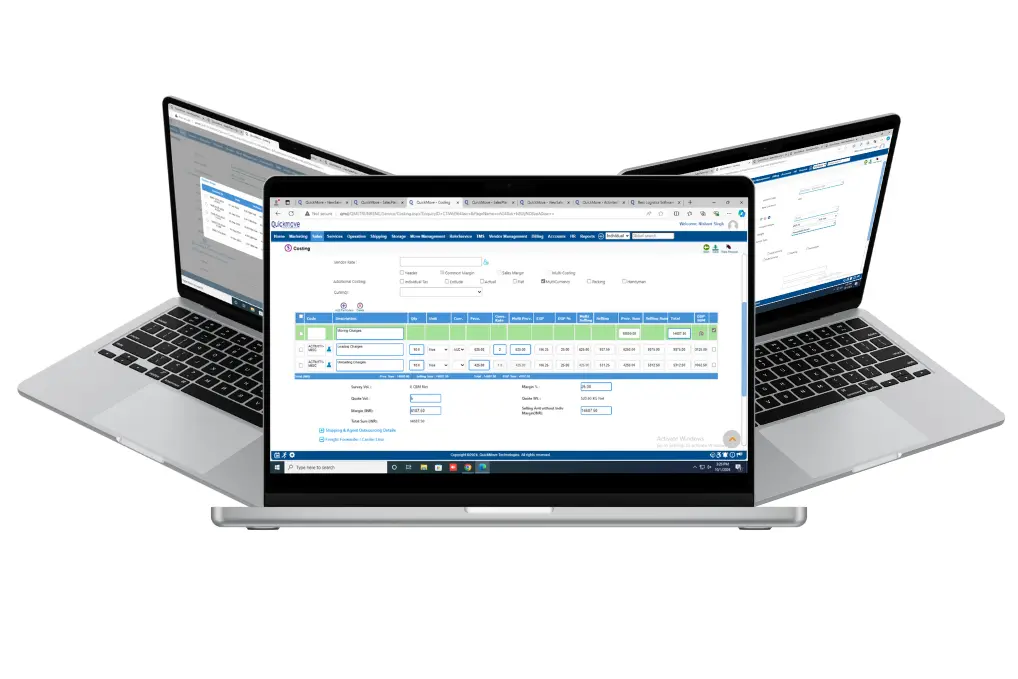In the highly competitive business environment today, businesses are under enormous pressure to get products delivered faster, more precisely, and cheaper. To address these astronomically high demands, businesses are moving quickly to adopt a game-changing approach: warehouse automation. It’s not about shuffling stuff around; it’s about fundamentally transforming the way products are stored, processed, and shipped, creating historically unprecedented degrees of efficiency and customer satisfaction.
What Does “Automation” Mean in Warehousing?
Automation in warehouse operations means using smart machines, advanced software, and technology to perform tasks that were traditionally done by hand. This can range from simple conveyer belts that move items effortlessly, to sophisticated robots that pick and pack orders, and intelligent software systems that manage everything. Automation doesn’t just speed things up; it virtually eliminates human error, boosts safety, and optimizes every step of the logistics chain.
Why Automation is Essential for Modern Warehouse Management
The shift towards automation is driven by compelling reasons, offering a clear competitive edge:
- Turbocharged Workflows for Faster Delivery:
Manual picking and packing are inherently time-consuming. Automation transforms this by creating seamless workflows where goods move swiftly from storage to shipping points. This dramatic increase in speed allows companies to process a much higher volume of orders in significantly less time, directly translating to faster delivery times and happier customers.
- Near-Perfect Accuracy and Reduced Errors:
Human errors in picking, packing, or labeling products can lead to costly returns, wasted resources, and, most importantly, unhappy customers. Automation, powerfully combined with a robust warehouse management system (WMS), drastically cuts down on these errors. The WMS meticulously tracks every item from the moment it enters the warehouse until it leaves, ensuring the right product goes to the right customer, every time.
- Intelligent Space Efficiency:
Every square foot in a warehouse costs money. Automated systems are masters at maximizing storage space. Vertical shelving systems and smart storage tools like Automated Storage and Retrieval Systems (AS/RS) allow warehouses to store far more inventory in the same footprint, or even a smaller one, postponing the need for expensive expansions.
- Significant Long-Term Cost Savings:
While the initial investment in automation might seem substantial, the long-term cost savings are undeniable. By automating repetitive tasks, fewer workers are needed for those specific roles, allowing them to be redeployed to more value-added activities. Moreover, the warehouse can handle a larger volume of orders without needing more physical space or a proportional increase in staff, leading to substantial savings on labor, utilities, and potential property costs.
- Enhanced Safety for Your Workforce:
Repetitive motions, heavy lifting, and navigating busy warehouse manually can lead to injuries. Automation reduces the need for manual handling of goods, particularly heavy or awkwardly shaped items. This significantly decreases the risk of workplace accidents and creates a much safer environment for everyone working in the warehouse.
Key Tools Driving Warehouse Automation
Even without massive robotic installations, several tools are fundamental to effective warehouse automation:
- Conveyor Belts: The backbone of many automated systems, these help move goods easily across the warehouse floor without manual lifting, optimizing flow.
- Barcode Scanners & RFID: These tools are crucial for quick and accurate tracking of goods as they enter, move within, and exit storage. They ensure real-time inventory visibility.
- Automated Storage and Retrieval Systems (AS/RS): These impressive systems automatically store and retrieve items from high shelves, maximizing vertical space and speeding up access to inventory.
- Warehouse Management System (WMS): This is the ultimate brain of the automated warehouse. This sophisticated software helps manage everything from precise inventory levels and optimized storage locations to efficient order processing and shipment planning. A good WMS provides real-time updates and helps plan every single step in your warehouse operation, making data-driven decisions possible.
A Simple Example: Bringing Automation to Life
Imagine an online store selling kitchenware. Every day, they receive hundreds of orders. In a traditional manual system, workers would spend hours walking around the warehouse, picking items one by one and packing them. This is slow and prone to errors.
With automation and a powerful warehouse management system, the process transforms:
When an order comes in, the warehouse management system instantly identifies the best location for each product. Automation conveyors bring items to picking stations. The system then guides the human packer to pick the exact product. A scanner confirms the correct item is selected, and the WMS immediately updates the stock level. The entire process becomes incredibly fast, reliable, and transparent, ensuring the right items are shipped to the right customer on time, every time.
A common misconception is that automation is exclusively for massive corporations. This is simply not true. Even small and medium-sized warehouses can start their automation journey with relatively low-cost, high-impact tools like barcode scanners and foundational WMS software. These initial steps can dramatically improve accuracy and speed without requiring a huge upfront investment. Over time, as efficiency grows and profits increase, the initial investment easily pays for itself through better customer service and higher returns.
Conclusion
Automation is not just changing; it’s redefining how warehouse operations are managed. It empowers businesses to work smarter by drastically reducing errors, significantly speeding up processes, and creating a safer environment. One of the most critical components of this transformation is the warehouse management system, which acts as the central orchestrator, bringing together every aspect—from precise inventory tracking to flawless order fulfillment.




